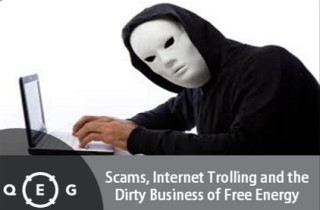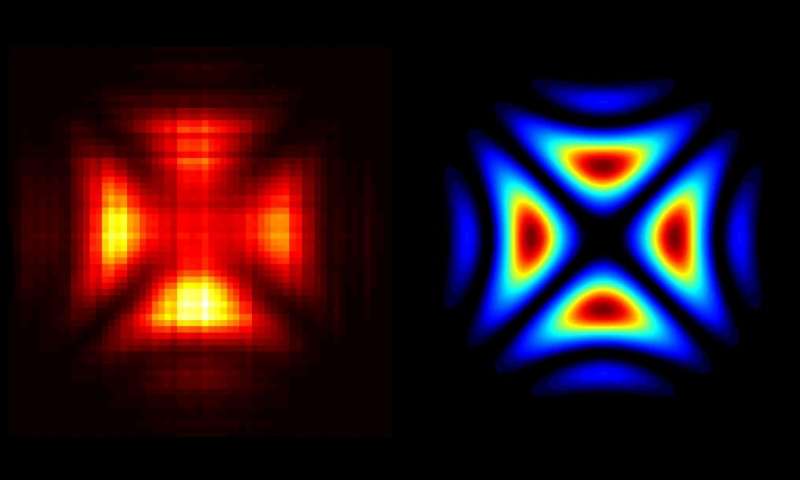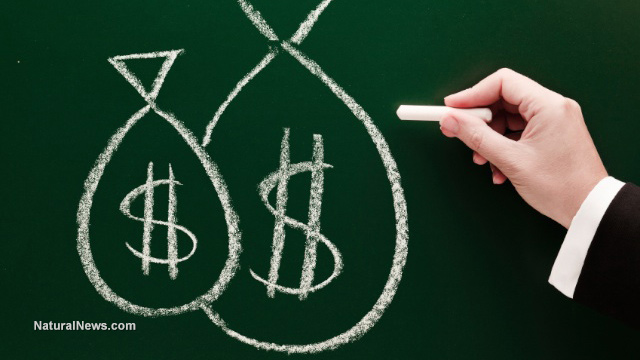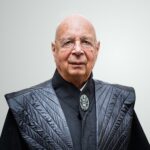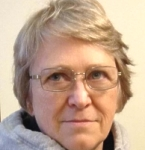Declassify
Secret Energy
Patents
by Action to
Gary Vesperman
A Proposed Bill to Support New Energy Sources
announced last August, at a meeting in Las Vegas, a bill for the Small Business Administration to annually provide 750 million dollars in energy loan guarantees.
In response to Berkley’s subsequent request for responses from the audience, I explained that the U.S. Patent Office has a nine-member committee which screens patents for national security implications, and that a hidden purpose of this committee is to lock up energy-related patents which could threaten the fossil-fuel monopolies and the power grid (nuclear, coal, etc.). When an inventor has his or her energy patent classified, I explained, the inventor faces 20 years in prison for working on or publicizing the invention.
I told Berkley and the audience that a Space Energy Journal article by Don Kelly claimed some years ago that there are now 3000 energy patents which have been classified, and that I considered it highly likely that there were some potentially very productive new sources of energy locked up in those 3000 patents.
I asked Berkley to add a section to her bill to establish some kind of mechanism for going back and reviewing all these classified energy patents for possible release and government support for their development.
Berkley seemed favorably responsive. I offered to help her write the section, and was referred to a staff member.
Below are a few stories to give readers who are unfamiliar with energy invention suppression a feeling for the ruthlessness and unfairness of this dirty, greedy business.[fusion_builder_container hundred_percent=”yes” overflow=”visible”][fusion_builder_row][fusion_builder_column type=”1_1″ background_position=”left top” background_color=”” border_size=”” border_color=”” border_style=”solid” spacing=”yes” background_image=”” background_repeat=”no-repeat” padding=”” margin_top=”0px” margin_bottom=”0px” class=”” id=”” animation_type=”” animation_speed=”0.3″ animation_direction=”left” hide_on_mobile=”no” center_content=”no” min_height=”none”][1]
Energy Patent Suppression: Seven Cautionary Tales
Story No. 1
Neil Schmidt stopped in my office on May 12, 1995, to tell me this story about his invention of a hydraulic wind turbine.
At this time, he had been living in Las Vegas for seven years. But nine years before, he was living in the Seattle area, and had visited a federal Small Business Administration office there to apply for financial aid.
The following day, he received a telephone call. He was told his device would not work, and not to bother with it.
He had provided the SBA office with hardly more than a sketch, so a hot argument erupted which lasted half an hour. The caller ended up hinting death to Neil if he didn’t stop working on his invention.
A couple of days later, Neil went back to the office and walked around unsuccessfully trying to identify the voice he had heard on the telephone.
Neil also has heard that another energy inventor living near his Washington residence had been shot in the head and blinded.
Story No. 2
When one of my inventor friends was a young man, he invented a 90-mpg carburetor.
He was paid a visit by four men, including one from Standard Oil and two wearing U.S. Marshal’s uniforms.
They told him that if he ever made another carburetor, they would kill him, his wife, and two young children. He was quickly persuaded that his life wasn’t worth a “damn carburetor.”
He happened to think to memorize the badge numbers of the two “US Marshals,” and so had an attorney in Washington, DC, check with the US Marshal’s office. They had no record of the two badge numbers.
Story No. 3
In the 1930s, Henry T. Moray was refused a patent on his cold semiconductor cathode, allegedly because the patent examiner couldn’t understand how it could emit electrons. Twenty years later, the development of the transistor proved that his device could actually have worked.
Then in 1940, Moray demonstrated before members of the Public Utilities Commission (PUC) his free energy generator, which gave a continuous output of 250,000 volts with no apparent input. The next day he was found shot in his lab, and all of his notes and device were stolen.
Currently, the Cosray Research Institute of Salt Lake City has been collecting Moray’s papers from old acquaintances and attempting to duplicate the device.
Story No. 4
In May 1974, John Andrews, a Portuguese chemist, demonstrated a water-to-gas additive before Navy officials. The additive allowed ordinary water to be added to gasoline without decreasing the combustibility of the gas. It would have driven the cost of gasoline down to two cents per gallon.
When U.S. Navy officials finally went to his lab to negotiate for the formula, they found Andrews missing and his lab ransacked.
Story No. 5
In July 1974, the Los Angeles District Attorney, acting under orders from the “top,” raided the assembly plant of Ed Gray and confiscated his prototype generator, as well as his plans and records. They brought numerous false charges against him, and defied all attempts by Gray’s lawyers to get the confiscated materials returned.
Gray’s opponents have driven him into bankruptcy (Generator, Free Energy, Patent No. 38,905,480).
Story No. 6
On September 3, 1978, a U.S. Government agency restricted development of a CB radio and telephone privacy device. The device had been invented by four men — Carl Kicolai, William Raike, Carl Quale, and David Miller, of Seattle, Washington. It prevents eavesdropping on CB radio and telephone transmissions for nonmilitary, nongovernment use.
The patent was applied for and refused. The National Security Agency was quick to issue a secrecy order against them,[2] preventing them from even talking about the invention without risking a jail term.
The order was received six months after a patent was filed for the device. The Patent Office wrote: “Your application . . . has been found to contain subject matter, the unauthorized disclosure of which might be detrimental to national security.”
Story No. 7
Most people believe that it is impossible to build a motor run solely by magnets. Howard Johnson spent six years fighting the Patent Office to accept the reality of his magnet motor. They finally granted him U.S. Patent 4,151,431. There are dozens of other magnet motor patents.
Many achievements in developing free energy from magnetism have occurred in obscure basement workshops all over the country. In most cases, these achievements remain the secret of the inventor, who fears reprisal.
Engineers at Hitachi Magnetics Corporation have publicly admitted that a motor run by magnets is feasible and logical. But the politics of the matter make it impossible for them to pursue developing a magnet motor, or any device that would compete with the energy cartels.
Recent Developments: Reviving the OTA
OTA, or Office of Technology Assessment, is an arm of Congress that formerly — from 1972 to 1995 — provided comprehensive assessments of a wide range of scientific and technical issues.
In August 2001, I learned that Rush Holt (D-NJ) has introduced legislation in the House of Representatives proposing to return the OTA to active status (OTA — see cnie.org/Updates/106.htm).
During its years of operation, OTA supplied Congress with background papers, briefings, and testimony, but was best known for its in-depth, objective reports of complex scientific and technical issues. These reports took one to two years to produce and could be requested by the chairman of any Congressional committee.
OTA’s Environment Program addressed areas including environmental health and risk management, the use of renewable resources, and pollution prevention, control and remediation. Its reports covered topics such as agriculture, biological diversity, air and water pollution, the effects of weather and climate change, management of solid, hazardous, and nuclear wastes, risk assessment methods and policy, and public land management.
Resurrecting OTA was suggested in Recommendations for Improving the Scientific Basis for Environmental Decision Making, a report from the first national conference of the National Council for Science and the Environment (NCSE). NCSE suggested reviving the Office of Technology Assessment as a change that could “significantly improve efficiency and communication among scientists and between scientists and decision makers.”
The full text of this report can be found online at NCSEonline.org.
National Public Radio’s July 18 broadcast of “All Things Considered” included a segment on reopening OTA. During this piece, Rep. Sherwood Boehlert (R-NY), chairman of the House Science Committee, and Rep. Vernon Ehlers (R-MI), a physicist by training, lauded the work of OTA and their “wonderful, detailed, long-term studies.”
However, Newt Gingrich, Speaker of the House of Representatives when OTA was eliminated, noted that many conservatives felt that OTA “was used by liberals to cover up political ideology with a gloss of science.”
Rep. Holt’s bill, H.R. 2148, would revive OTA by simply reenacting its 1972 formative legislation and authorizing a budget of 20 million dollars per year for five years. This is the same level of funding OTA received in 1994. Currently, this legislation has 50 cosponsors.[3].
To express your opinion on H.R. 2148 and the revival of OTA, contact your Representative and Senators at:
• Honorable [insert name], United States House of Representatives, Washington, DC 20515
• Senator [insert name], United States Senate, Washington, DC 20510
For details about OTA, including an archive of reports, see www.princeton.edu/ota, or contact Kevin Hutton, Webmaster, National Council for Science and the Environment, 1725 K St. NW, Suite 212, Washington, DC 20006, website cnie.org.
It’s Probably Closer to 4000
Thomas Valone, of the Integrity Research Institute (iri@erols.com) wrote to me saying that my suggestion to Congresswoman Berkley was “an answer to a prayer.”
Integrity Research Institute (IntegrityResearch.org) and the Disclosure Project[4] both support your suggestion.
I will be happy to cooperate with your requests (see “How You Can Help,” below), and even meet with staffperson Guiton at his convenience.
As a former Patent Examiner, I can tell you that the number of “secretized” patents in the vault at the Patent Office (Park 5 Bldg.) is closer to 4000 or more. They [applicants] never receive a patent number, and the inventor is rarely, if ever, compensated by the government for use of the invention.
Since you have taken the initiative to start this process, we can help by contacting our Congresspeople and asking them to send letters to Congresswoman Berkley in support.
I also suggest that we all should ask our Congresspersons to contact the three committees that are pertinent to this subject: Environment and Public Works (headed by James Jeffords); Energy and Natural Resources (headed by Jeff Bingaman); and Commerce (headed by Ernest Hollings).
Help from Down Under
Concerning the proposal of an energy bill to declassify patents, Australia’s Trevor Osborne (wharmony@iinet.net.au) wrote me that he has sent out an email to about 100 opinion leaders who might help perpetuate the momentum.
“So the momentum is gaining speed,” Osborne wrote. “First, we had the Disclosure Project. Now we have the proposed Energy Bill to Declassify Energy Patents. So please do your best to pass this news on to anyone who may be interested in writing to and/or phoning their Congressperson to offer their support to this bill.”
Meanwhile on Capitol Hill
The energy bill that was actually passed by the House was not about strengthening America’s strategic energy position. Rather, it was about something much simpler — a gigantic giveaway to the energy industry.
The dishonesty began with the bill’s very first sentence: “To enhance energy conservation, research, and development. . .” In fact, the bill not only ignored conservation, it actually subverted it, epitomizing Vice President Cheney’s view that “conservation is for wimps.”
The bill, among other things, extends a loophole for automobiles that can also run on ethanol but rarely do; this means that overall vehicle fuel efficiency would probably be reduced. Yet 36 Democrats joined Republicans in voting for this legislation, giving President Bush a comfortable margin of victory — and, as with the tax cut, bipartisan cover.
Not surprisingly, it was mostly Democrats from auto-producing and energy states who supported the bill. These included John D. Dingell (Michigan), Brad Carson (Oklahoma) and Chet Edwards (Texas), as well as Californians Joe Baca (Rialto) and Calvin M. Dooley (Visalia).
The bill is a natural target for Democrats. For one thing, the links between campaign contributions and the bill’s provisions could hardly be clearer. In an analysis released by Rep. Henry A. Waxman (D-Los Angeles) called “Hitting the Jackpot,” the rewards for industry are outlined.
The report mischievously observes that the cumulative value of the 2000 election-campaign contributions by the coal, oil and gas, nuclear, and utility industries — the lion’s share of which went to the GOP — was 69.5 million dollars. But the total value of the tax breaks and subsidies is 36.4 billion dollars. The rate of return on these campaign contributions was thus a whopping 52,200 percent!
Specifically, the coal mining industry, which contributed 3.8 million dollars, would receive 1.1 billion dollars in direct subsidies in the next three years, and an extra 1.4 billion dollars over the next seven years.
Typical of the bill is that government would assume the industry’s costs for applying to mine coal on federal lands.
The oil industry, which contributed 33.3 million dollars in 2000, would get tax breaks worth 12.8 billion dollars, according to the Joint Committee on Taxation. For instance, it would no longer have to pay royalties for oil and gas lease sales.
The only good news is that the Senate is not likely to pass the energy bill unamended.
How You Can Help
I can see several ways you can help me declassify energy patents by focusing a public spotlight on the Patent Office’s patent secrecy performance.
First, you can help me by providing references to back up my claims concerning the 9-member screening committee, the 20-year jail sentence for breaking a “gag order,” and the number and nature of the classified patents. I will in turn send these to Mark Guiton, legislative director in the U.S. House of Representatives.[5]
Second, it will also help if you can provide me with name and contact information for an expert on classified patents. I can then suggest to Mark Guiton that he go to this expert for information and advice.
Third, if you can, please give thought to the mechanism that might be incorporated into the new section of the legislation, specifying exactly how the patents are to be reviewed and declassified. One crucial feature would involve how people are selected for the review agency to assure that they will be honest, rather than “toadies” for fossil fuel and nuclear interests. I feel that it would be of value to hold a public seminar in the Washington, DC, area on the subject — perhaps in a Patent Office auditorium. Any way in which you can lend support to such a seminar would be welcome.
And it will assist my own endeavors if someone could email me a copy of the actual form the Patent Office uses when directing an inventor to stop working on an invention(vman@skylink.net).
In Conclusion
I think Congresswoman Berkley deserves high praise for introducing an unusually progressive energy bill. I urge you all to write your congresspeople and senators to support a bill which would include a provision for systematically reviewing all classified energy patents for release.
Gary Vesperman is a tireless writer and activist with knowledge in a vast area of subjects of interest and concern to modern technology and our way of life. His mailing address is 3123 Trueno Road, Henderson, NV 89014-3142, phone 702-435-7947. He can be reached via email at vman@skylink.net.
Footnotes:
1. Please note that I have not independently verified the truthfulness of these stories.
2. Called “gag orders,” defiance risks a 20-year prison term.
3. Cosponsors of the OTA-revival bill include Thomas H. Allen (D-ME), Tammy Baldwin (D-WI), Judy Biggert (R-IL), Earl Blumenauer (D-OR), Sherwood Boehlert (R-NY), Rick Boucher (D-VA), Lois Capps (D-CA), Michael Capuano (D-MA), Wm. Lacy Clay (D-MO), William J. Coyne (D-PA), Joseph Crowley (D-NY), John D. Dingell (D-MI), Lloyd Doggett (D-TX), Michael F. Doyle (D-PA), Vernon J. Ehlers (R-MI), Eliot L. Engel (D-NY), Bob Filner (D-CA), Wayne Gilchrest (R-MD), James Greenwood (R-PA), Tony P. Hall (D-OH), Jane Harman (D-CA), Joseph M. Hoeffel (D-PA), Rush Holt (D-NJ), Michael M. Honda (D-CA), Amo Houghton (R-NY), Steny H. Hoyer (D-MD), Dale E. Kildee (D-MI), Ron Kind (D-WI), John J. LaFalce (D-NY), John Lewis (D-GA), Zoe Lofgren (D-CA), Edward J. Markey (D-MA), Karen McCarthy (D-MO), Jim McDermott (D-WA), Cynthia McKinney (D-GA), James P. Moran (D-VA), Constance Morella (R-MD), Jerrold Nadler (D-NY), Richard E. Neal (D-MA), John W. Olver (D-MA), Bill Pascrell, Jr. (D-NJ), Donald M. Payne (D-NJ), David E. Price (D-NC), Tom Sawyer (D-OH), Christopher Shays (R-CT), Louise McIntosh Slaughter (D-NY), Adam Smith (D-WA), Vic Snyder (D-AR), Hilda L. Solis (D-CA), and David Wu (D-OR).
4. See disclosureproject.org. See also this month’s Spirit of Ma’at article titled Secrets From the Stars.
5. His email is Mark.Guiton@Mail.House.Gov. He also can be reached: by mail at U.S. House of Representatives, 439 Cannon Building, Washington, DC 20515; by phone at 202-225-5965; and by fax at 202-225-3119.
U.S. Secrecy Act
Dear Patrick Bailey,
Sorry this took so long to get back with you. I finally got the file hunted down today. When I first down loaded it several months ago, it had so many little pages to go with it that it was almost like pulling hen’s teeth.
I’d recommend that any would be inventor be informed of this Secrecy Code Title 35, Chapter 17, Articles 181 thru 188.
The government obviously doesn’t want these kinds of inventions out namely because it would endanger their oil, coal, and gas industry which a good majority are a part of.
As you read this, you’ll read between the lines rather quite easily if your put your frame of mind in the mind of the selfish, corrupt politician who are interested in lining their pockets of our hard earned tax dollars.
When I tried to access this same document through the patent office web page, the access was denied because I didn’t have security clearance, then another time it said it didn’t exist.
For any inventor, who wishes to cash in on their fruits of their labor, advise them with great importance of this document. If they feel that they fit in that category. They’d be better off to either patent it in a foreign country or start producing them on their own. Bare in mind that in order to get their products out, they themselves should treat it like running a drug ring and don’t get caught by the U.S. government.
This Title 35 has been used for years to ensnare any inventor out there who’s invention will threaten the industry the U.S. government protects.
Spread the warning! ! ! – Thick, Far and Wide!
The military can down right get nasty once they put the “brass” cap on their invention. (The real appalling thing I heard is, if it so called is so vital to their security, then why is it that through an international archive than anyone from any country can gain access to?) I’m not certain how true this part is, BUT I think if anyone would know, it would be Bruce DePalma, who I believe now resides in Australia [or New Zealand. PB.] to avoid harassment by the U.S. Government.
Anyway, I have removed my own personal notations from this document to keep it as original as possible.
BTW, I have checked out your web page again and it’s very impressive. I’ll be visiting it quite frequently as there are many things in there I research in, especially with the Bismuth and the Faraday effect.
Thank you so much for putting this into your web page!!! I am honored that I can warn future inventors out there. I am very glad that I was able to find your site. 🙂
Best Regards,
Stace
[Thank You Stacey, and God Bless you!!! PB] Here it is:
U.S. PATENT LAW: TITLE 35, PART II, CHAPTER 17, SECTIONS 181-188
UNITED STATES CODE
TITLE 35 – PATENTS
PART II – PATENTABILITY OF INVENTIONS AND GRANT OF PATENTS
CHAPTER 17 – SECRECY OF CERTAIN INVENTIONS AND FILING APPLICATIONS IN FOREIGN
COUNTRY
Section 181. Secrecy of certain inventions and withholding of patent. Section 182. Abandonment of invention for unauthorized disclosure. Section 183. Right of compensation. (FOOTNOTE 1)
(FOOTNOTE 1) So in original. Does not conform to section catchline. Section 184. Filing of application in foreign country. Section 185. Patent barred for filing without license. Section 186. Penalty. Section 187. Nonapplicability to certain persons. Section 188. Rules and regulations, delegation of power.
Section 181. Secrecy of certain inventions and withholding of patent
Whenever publication or disclosure by the grant of a patent on an invention in which the Government has a property interest might, in the opinion of the head of the interested Government agency, be detrimental to the national security, the Commissioner upon being so notified shall order that the invention be kept secret and shall withhold the grant of a patent therefor under the conditions set forth hereinafter.
Whenever the publication or disclosure of an invention by the granting of a patent, in which the Government does not have a property interest, might, in the opinion of the Commissioner, be detrimental to the national security, he shall make the application for patent in which such invention is disclosed available for inspection to the Atomic Energy Commission, the Secretary of Defense, and the chief officer of any other department or agency of the Government designated by the President as a defense agency of the United States.
Each individual to whom the application is disclosed shall sign a dated acknowledgment thereof, which acknowledgment shall be entered in the file of the application. If, in the opinion of the Atomic Energy Commission, the Secretary of a Defense Department, or the chief officer of another department or agency so designated, the publication or disclosure of the invention by the granting of a patent therefor would be detrimental to the national security, the Atomic Energy Commission, the Secretary of a Defense Department, or such other chief officer shall notify the Commissioner and the Commissioner shall order that the invention be kept secret and shall withhold the grant of a patent for such period as the national interest requires, and notify the applicant thereof. Upon proper showing by the head of the department or agency who caused the secrecy order to be issued that the examination of the application might jeopardize the national interest, the Commissioner shall thereupon maintain the application in a sealed condition and notify the applicant thereof. The owner of an application which has been placed under a secrecy order shall have a right to appeal from the order to the Secretary of Commerce under rules prescribed by him.
An invention shall not be ordered kept secret and the grant of a patent withheld for a period of more than one year. The Commissioner shall renew the order at the end thereof, or at the end of any renewal period, for additional periods of one year upon notification by the head of the department or the chief officer of the agency who caused the order to be issued that an affirmative determination has been made that the national interest continues so to require. An order in effect, or issued, during a time when the United States is at war, shall remain in effect for the duration of hostilities and one year following cessation of hostilities. An order in effect, or issued, during a national emergency declared by the President shall remain in effect for the duration of the national emergency and six months thereafter. The Commissioner may rescind any order upon notification by the heads of the departments and the chief officers of the agencies who caused the order to be issued that the publication or disclosure of the invention is no longer deemed detrimental to the national security.
Section 182. Abandonment of invention for unauthorized disclosure
The invention disclosed in an application for patent subject to an order made pursuant to section 181 of this title may be held abandoned upon its being established by the Commissioner that in violation of said order the invention has been published or disclosed or that an application for a patent therefor has been filed in a foreign country by the inventor, his successors, assigns, or legal representatives, or anyone in privity with him or them, without the consent of the Commissioner. The abandonment shall be held to have occurred as of the time of violation. The consent of the Commissioner shall not be given without the concurrence of the heads of the departments and the chief officers of the agencies who caused the order to be issued. A holding of abandonment shall constitute forfeiture by the applicant, his successors, assigns, or legal representatives, or anyone in privity with him or them, of all claims against the United States based upon such invention.
Section 183. Right to compensation
An applicant, his successors, assigns, or legal representatives, whose patent is withheld as herein provided, shall have the right, beginning at the date the applicant is notified that, except for such order, his application is otherwise in condition for allowance, or February 1, 1952, whichever is later, and ending six years after a patent is issued thereon, to apply to the head of any department or agency who caused the order to be issued for compensation for the damage caused by the order of secrecy and/or for the use of the invention by the Government, resulting from his disclosure. The right to compensation for use shall begin on the date of the first use of the invention by the Government. The head of the department or agency is authorized, upon the presentation of a claim, to enter into an agreement with the applicant, his successors, assigns, or legal representatives, in full settlement for the damage and/or use. This settlement agreement shall be conclusive for all purposes notwithstanding any other provision of law to the contrary. If full settlement of the claim cannot be effected, the head of the department or agency may award and pay to such applicant, his successors, assigns, or legal representatives, a sum not exceeding 75 per centum of the sum which the head of the department or agency considers just compensation for the damage and/or use. A claimant may bring suit against the United States in the United States Court of Federal Claims or in the District Court of the United States for the district in which such claimant is a resident for an amount which when added to the award shall constitute just compensation for the damage and/or use of the invention by the Government. The owner of any patent issued upon an application that was subject to a secrecy order issued pursuant to section 181 of this title, who did not apply for compensation as above provided, shall have the right, after the date of issuance of such patent, to bring suit in the United States Court of Federal Claims for just compensation for the damage caused by reason of the order of secrecy and/or use by the Government of the invention resulting from his disclosure. The right to compensation for use shall begin on the date of the first use of the invention by the Government. In a suit under the provisions of this section the United States may avail itself of all defenses it may plead in an action under section 1498 of title 28. This section shall not confer a right of action on anyone or his successors, assigns, or legal representatives who, while in the full-time employment or service of the United States, discovered, invented, or developed the invention on which the claim is based.
Section 184. Filing of application in foreign country
Except when authorized by a license obtained from the Commissioner a person shall not file or cause or authorize to be filed in any foreign country prior to six months after filing in the United States an application for patent or for the registration of a utility model, industrial design, or model in respect of an invention made in this country. A license shall not be granted with respect to an invention subject to an order issued by the Commissioner pursuant to section 181 of this title without the concurrence of the head of the departments and the chief officers of the agencies who caused the order to be issued. The license may be granted retroactively where an application has been filed abroad through error and without deceptive intent and the application does not disclose an invention within the scope of section 181 of this title.
The term ”application” when used in this chapter includes applications and any modifications, amendments, or supplements thereto, or divisions thereof.
The scope of a license shall permit subsequent modifications, amendments, and supplements containing additional subject matter if the application upon which the request for the license is based is not, or was not, required to be made available for inspection under section 181 of this title and if such modifications, amendments, and supplements do not change the general nature of the invention in a manner which would require such application to be made available for inspection under such section 181. In any case in which a license is not, or was not, required in order to file an application in any foreign country, such subsequent modifications, amendments, and supplements may be made, without a license, to the application filed in the foreign country if the United States application was not required to be made available for inspection under section 181 and if such modifications, amendments, and supplements do not, or did not, change the general nature of the invention in a manner which would require the United States application to have been made available for inspection under such section 181.
Section 185. Patent barred for filing without license
Notwithstanding any other provisions of law any person, and his successors, assigns, or legal representatives, shall not receive a United States patent for an invention if that person, or his successors, assigns, or legal representatives shall, without procuring the license prescribed in section 184 of this title, have made, or consented to or assisted another’s making, application in a foreign country for a patent or for the registration of a utility model, industrial design, or model in respect of the invention. A United States patent issued to such person, his successors, assigns, or legal representatives shall be invalid, unless the failure to procure such license was through error and without deceptive intent, and the patent does not disclose subject matter within the scope of section 181 of this title.. (FOOTNOTE 1) So in original.
Section 186. Penalty
Whoever, during the period or periods of time an invention has been ordered to be kept secret and the grant of a patent thereon withheld pursuant to section 181 of this title, shall, with knowledge of such order and without due authorization, willfully publish or disclose or authorize or cause to be published or disclosed the invention, or material information with respect thereto, or whoever willfully, in violation of the provisions of section 184 of this title, shall file or cause or authorize to be filed in any foreign country an application for patent or for the registration of a utility model, industrial design, or model in respect of any invention made in the United States, shall, upon conviction, be fined not more than $10,000 or imprisoned for not more than two years, or both.
Section 187. Nonapplicability to certain persons
The prohibitions and penalties of this chapter shall not apply to any officer or agent of the United States acting within the scope of his authority, nor to any person acting upon his written instructions or permission.
Section 188. Rules and regulations, delegation of power
The Atomic Energy Commission, the Secretary of a defense department, the chief officer of any other department or agency of the Government designated by the President as a defense agency of the United States, and the Secretary of Commerce, may separately issue rules and regulations to enable the respective department or agency to carry out the provisions of this chapter, and may delegate any power conferred by this chapter.[/fusion_builder_column][/fusion_builder_row][/fusion_builder_container]


